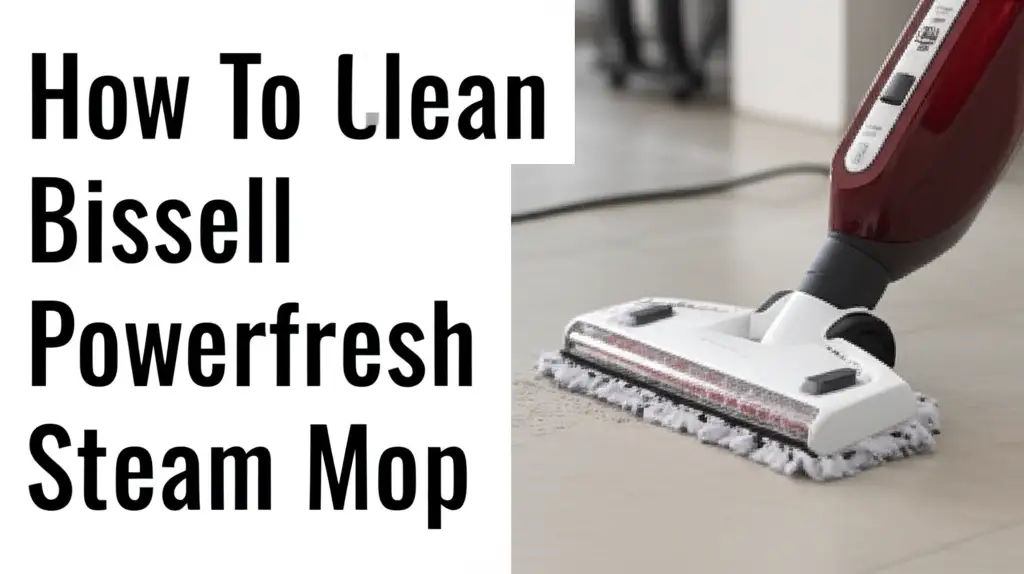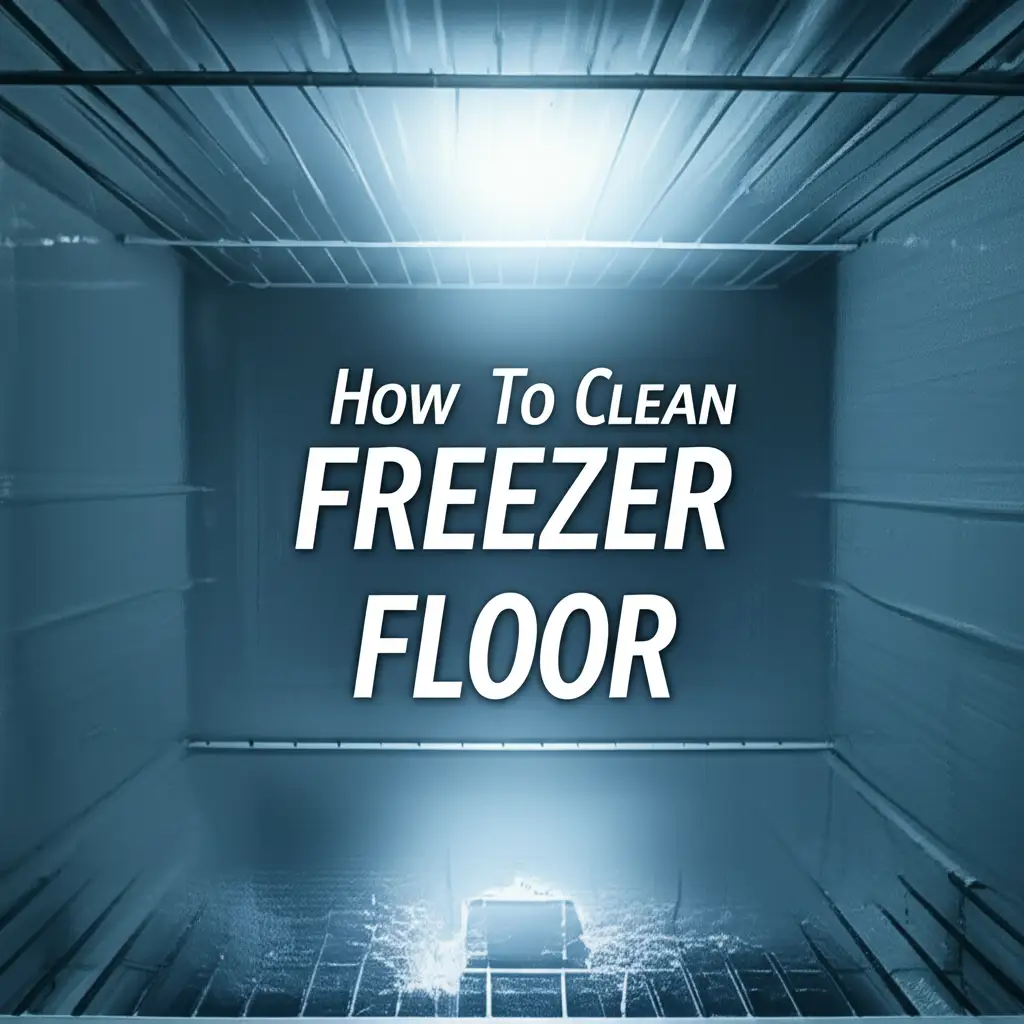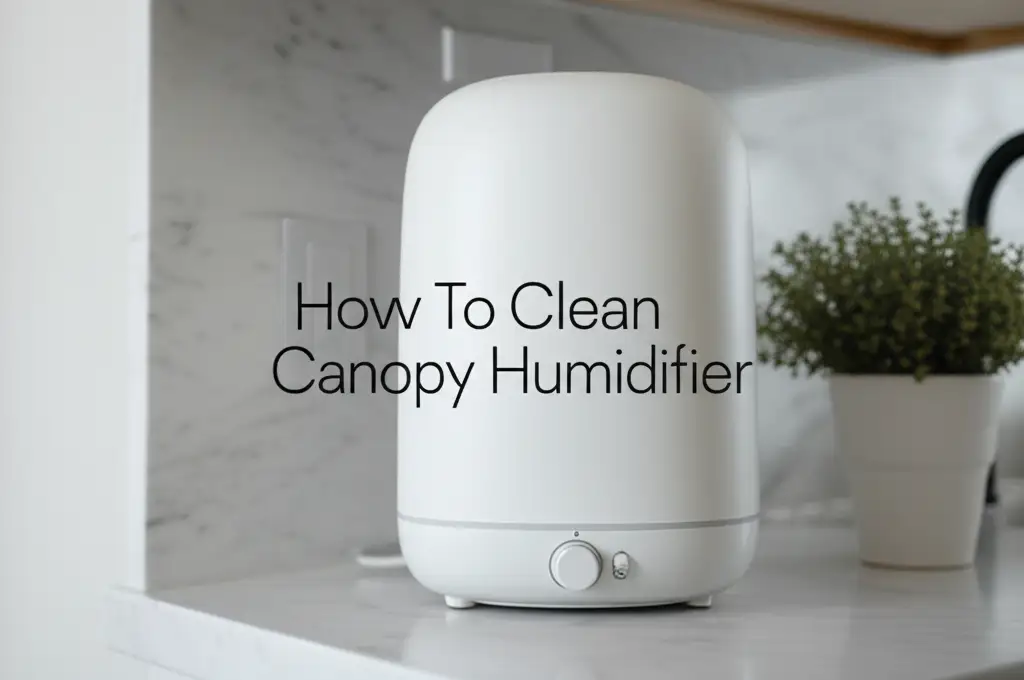· Home Cleaning · 18 min read
How To Clean Bissell Powerfresh Steam Mop

How To Clean Bissell Powerfresh Steam Mop
Your Bissell Powerfresh Steam Mop brings a powerful clean to your floors. It makes quick work of dirt and grime, leaving surfaces sanitized without harsh chemicals. But like any hard-working appliance, your steam mop needs regular care. Keeping your Bissell Powerfresh Steam Mop clean ensures it continues to perform at its best. It also helps prevent issues like clogs or streaks. This guide will walk you through everything you need to know about cleaning your steam mop. We cover daily care, deep cleaning, and important maintenance tips. You will learn how to clean the pads, descale the water tank, and keep your mop ready for any mess. Let’s make sure your Bissell Powerfresh stays a cleaning powerhouse.
Takeaway:
- Regularly clean mop pads after each use to remove dirt and maintain absorbency.
- Descale the water tank every 1-3 months with vinegar to prevent mineral buildup.
- Clean the mop’s exterior and nozzles to ensure steam flow and hygiene.
- Store your Bissell Powerfresh Steam Mop properly to extend its lifespan.
To clean your Bissell Powerfresh Steam Mop, remove and wash mop pads regularly. Descale the water tank every few months using distilled water or a vinegar solution to prevent mineral buildup and ensure optimal steam production. Wipe down the exterior after each use.
Understanding Your Bissell Powerfresh Steam Mop
The Bissell Powerfresh Steam Mop uses hot steam to clean and sanitize hard floors. It is a popular choice for many homes. This mop heats water to a high temperature, creating steam that lifts dirt and kills germs. The steam then saturates a microfiber mop pad, which collects the loosened debris. Different models offer various features, such as scent discs or scrub brushes. Knowing your specific model helps with cleaning. For example, some models have detachable water tanks, making descaling easier. Others might have specific nozzle designs that need attention.
The steam mop works by pushing water through a heating element. This turns the water into steam. The steam exits through small nozzles onto the floor. Over time, minerals in your tap water can build up inside these pathways. This buildup reduces steam flow and can damage the heating element. Dirt and debris also accumulate on the mop pads and around the mop head. Regular cleaning removes these issues. It keeps the mop working efficiently. It also ensures you get the best clean for your floors every time. Proper care extends the life of your appliance.
The Bissell Powerfresh is designed for ease of use. This also applies to its maintenance. You do not need many special tools for cleaning. Basic household items like vinegar, soap, and water are often enough. Taking a few minutes after each use can prevent bigger problems later. This proactive approach saves you time and money on repairs. It ensures your cleaning routine remains effective. My own Bissell Powerfresh has lasted for years because I follow these simple steps.
Many users appreciate the chemical-free cleaning that steam mops offer. This makes them ideal for homes with pets or children. However, this also means the mop itself needs to be kept clean. A dirty mop can spread germs instead of killing them. Understanding how your mop functions will help you clean it effectively. You will be able to identify areas that need more attention. This knowledge empowers you to keep your home truly clean.
Essential Daily Care for Your Bissell Powerfresh
After each use, giving your Bissell Powerfresh Steam Mop a quick clean is vital. This daily care prevents dirt buildup and keeps the mop ready for next time. The most important step involves the mop pads. These pads pick up all the dirt and grime from your floors. They can become saturated with soil and even carry odors if not cleaned properly. Removing and washing them immediately is the best practice.
First, unplug your steam mop and let it cool down completely. Steam can cause serious burns, so safety is key. Once cool, detach the microfiber mop pad from the mop head. Most Bissell Powerfresh pads attach with Velcro or simple clips. Gently pull them off. Inspect the pad for any large debris like hair or crumbs. Shake these off into a trash can before washing.
Now, clean the mop pads. You can machine wash Bissell Powerfresh mop pads. Use your regular laundry detergent. For best results, wash them separately from other lint-attracting items. Avoid using fabric softener. Fabric softener can reduce the absorbency of the microfiber. This makes the pads less effective at picking up dirt. A good wash cycle with warm water works well. After washing, you can tumble dry them on a low setting or air dry them. Air drying helps preserve the microfiber. Cleaning mop heads without a washing machine is also possible if you prefer hand-washing. Just soak them in hot soapy water and scrub.
While the pads are washing, quickly wipe down the exterior of your steam mop. A damp cloth can remove any dust or dirt from the handle and body. Pay attention to the base of the mop head. Sometimes dirt or sticky residue can accumulate here. A quick wipe prevents it from hardening. This daily routine takes only a few minutes. It makes a big difference in the long run. It ensures your mop is always hygienic and functions smoothly.
Deep Cleaning the Water Tank and Descaling Your Mop
Mineral buildup inside the water tank and internal components is a common issue for steam mops. Tap water contains minerals that deposit as scale when heated. This scale can clog the steam nozzles, reduce steam output, and even damage the heating element over time. Descaling your Bissell Powerfresh Steam Mop regularly is crucial. I recommend doing this every 1-3 months, depending on your water hardness and how often you use the mop.
Vinegar is an excellent natural descaling agent. It is safe, effective, and readily available. To descale, first ensure your mop is unplugged and completely cool. Empty any remaining water from the tank. Next, fill the water tank with a solution of equal parts white vinegar and distilled water. Distilled water helps prevent new mineral deposits. If you have very hard water, you might use a higher concentration of vinegar, or even pure vinegar for severe buildup.
Once the tank is filled, plug in the mop and let it heat up. Once it is ready to steam, hold the mop over a sink or a bucket. Press the steam trigger to release steam until the tank is empty. This process flushes the vinegar solution through the internal components. It dissolves the mineral scale along the way. You might notice small white flakes coming out with the steam. This is normal and indicates the descaling is working. Repeat this process once or twice with clean distilled water to rinse out any remaining vinegar smell or residue. This step is important for odor removal.
For stubborn clogs in the steam nozzles, you can use a small, thin wire or a toothpick. Gently poke into the nozzle openings to dislodge any visible debris. Be careful not to damage the nozzle. I find that a paperclip straightened out works well. This step helps ensure a consistent and powerful steam flow. Cleaning a steam iron water tank involves similar descaling principles, focusing on preventing clogs in the steam vents. Regularly descaling protects your investment and maintains your mop’s performance.
Cleaning and Maintaining Your Mop Pads
The mop pads are the workhorses of your Bissell Powerfresh Steam Mop. They absorb dirt, grime, and even bacteria. Proper cleaning of these pads is essential for effective cleaning and hygiene. As mentioned, washing them after every use is ideal. This prevents dirt from drying and hardening onto the fibers. It also ensures the pads stay fresh and odor-free.
To machine wash your Bissell Powerfresh mop pads, use a gentle cycle with warm water. Add a small amount of regular laundry detergent. Avoid harsh bleaches or fabric softeners. Bleach can degrade the microfiber material over time. Fabric softener coats the fibers, reducing their ability to absorb water and dirt. If the pads are particularly dirty or stained, you can pre-soak them in a mixture of warm water and a little laundry detergent for 30 minutes before washing. For heavy stains, a dab of dish soap can work wonders before washing.
Air drying your mop pads is the best method to preserve their integrity. You can hang them to dry or lay them flat. If you need to use a dryer, select a low heat setting. High heat can damage the microfiber, making the pads less effective. Once dry, store them flat or folded neatly. This keeps them ready for your next cleaning session. Having a few extra mop pads on hand is always a good idea. This allows you to rotate them, ensuring you always have a clean one ready while others are washing.
Sometimes, despite washing, pads might retain a faint smell or stubborn stains. For these instances, a deeper clean can help. You can soak the pads overnight in a solution of warm water and a cup of white vinegar. Vinegar helps break down grime and eliminate odors. Another option is to use a small amount of oxygen bleach (color-safe bleach) in the wash cycle for a brightening boost. Remember to always rinse thoroughly. Keeping your mop pads in top condition directly impacts your floor cleaning results. My floors always look better with clean, absorbent pads. How to clean Shark steam mop pads provides more tips specific to different brands but the general principles for microfiber care remain the same.
Addressing Stubborn Buildup and Clogs
Even with regular maintenance, sometimes your Bissell Powerfresh Steam Mop can develop stubborn buildup or clogs. This often happens in the steam nozzles or the internal water lines. Identifying the source of the problem is the first step. Is the steam output weak? Is it uneven? Are there visible mineral deposits around the nozzles?
If the steam nozzles are clogged, use a small, stiff brush or a toothpick to gently clear the openings. Be careful not to push debris further inside. A fine needle or a straightened paperclip also works for tiny holes. Gently poke and twist to dislodge any mineral chunks. Follow this by running a vinegar descaling cycle, as described earlier. This helps flush out any loosened particles from inside. Cleaning a shower head with vinegar uses a similar concept for dissolving mineral deposits.
If the water tank itself has visible scale or residue that won’t rinse out, you might need a stronger vinegar soak. Fill the tank completely with undiluted white vinegar. Let it sit for several hours, or even overnight. The acid in the vinegar will work to dissolve the mineral deposits. After soaking, empty the tank and rinse it thoroughly with clean water multiple times. Then, perform a regular descaling cycle with diluted vinegar to flush the internal lines.
Sometimes, lint or debris can get into the small water filter screen, if your model has one. Refer to your Bissell Powerfresh user manual for its location. Often, this screen is at the bottom of the water tank or at the inlet point. Carefully remove it if accessible and rinse it under running water. Use a small brush to dislodge any trapped particles. Reinstall it securely.
For overall effectiveness, consider using distilled water in your steam mop. Distilled water contains no minerals, so it completely eliminates mineral buildup. This is especially useful if you live in an area with very hard water. While tap water is generally fine, distilled water significantly extends the time between descaling treatments. It also ensures consistent steam quality. I personally use distilled water often to keep my mop running perfectly.
Troubleshooting Common Cleaning Issues
Even with the best care, your Bissell Powerfresh Steam Mop might encounter issues. Knowing how to troubleshoot these problems can save you from frustration and extend your mop’s life. Here are some common problems and their solutions related to cleaning.
Problem 1: No Steam or Low Steam Output.
- Check Water Level: Is the water tank full? Your mop needs water to make steam.
- Check for Clogs: Mineral buildup is the most common cause. Perform a descaling procedure with vinegar.
- Nozzle Obstruction: Look for visible clogs in the steam nozzles and clear them with a pin or toothpick.
- Heating Element Issues: If descaling does not help, the heating element might be failing. This usually requires professional repair or replacement.
Problem 2: Streaks on Floors.
- Dirty Mop Pads: This is the most frequent cause. Ensure your mop pads are clean and free of dirt or residue. Wash them thoroughly after each use.
- Excess Water/Steam: Too much water can leave streaks. Ensure your mop is hot enough for steam, not just hot water. Some models have steam settings; use a lower setting if streaks persist.
- Residue on Floors: If you used cleaning solutions on your floor before steaming, residue might be reacting with the steam. Ensure floors are free of prior cleaning product residue.
- Mineral Buildup: Clogged nozzles can lead to uneven steam distribution, causing streaks. Descale your mop.
Problem 3: Mop Pads Not Picking Up Dirt.
- Worn Out Pads: Microfiber pads wear down over time. If they no longer feel plush or absorbent, it is time to replace them.
- Fabric Softener Residue: If you used fabric softener on your pads, they will lose absorbency. Re-wash them without softener and consider an overnight vinegar soak to strip residue.
- Pad Saturation: The pad might be too saturated with dirt and needs changing. Always have spare clean pads ready.
Problem 4: Unpleasant Odor from Mop.
- Dirty Pads: Mop pads can harbor bacteria and odors if not washed properly. Ensure thorough washing and drying.
- Mold/Mildew in Tank: If water sits in the tank for long periods, mold can grow. Always empty the tank after use. Run a vinegar descaling cycle to sanitize the tank and internal lines.
- Water Quality: Using tap water with high organic content can sometimes contribute to odors. Consider distilled water.
Most of these issues point back to consistent cleaning and maintenance. Regular descaling and proper pad care will prevent most problems before they start. My own experiences show that basic troubleshooting often solves the problem quickly.
Advanced Maintenance for Longevity
To truly extend the life of your Bissell Powerfresh Steam Mop, consider some advanced maintenance steps beyond regular cleaning. These practices help keep all parts of your mop in peak condition. They address potential issues that might arise from prolonged use.
One important area is the power cord and plug. Regularly inspect the cord for any fraying, cuts, or damage. A damaged cord is a safety hazard and can impact performance. If you find any damage, do not use the mop. Seek professional repair or consider replacement. Also, ensure the plug fits snugly into the outlet. Loose connections can lead to overheating.
The water tank cap and seal are also crucial. A loose or damaged cap can cause leaks and reduce steam pressure. Check the rubber seal on the cap for wear or cracks. If it looks compromised, replace it. Many manufacturers sell replacement parts. A good seal ensures all steam goes to your floors, not out the top.
Consider the general condition of the mop’s body and attachments. Are the clips holding the mop pad secure? Are any plastic parts cracked or broken? Small cracks can lead to bigger problems if ignored. Cleaning the crevices and joints of the mop head can also prevent dirt buildup that hinders movement. Use a cotton swab for tight spaces.
Storing your steam mop properly is also a form of advanced maintenance. Always store it upright in a dry place. Do not wrap the power cord too tightly around the mop. This can damage the cord over time. Ensure the water tank is empty before storage, especially for long periods. Leaving water in the tank can lead to stagnant water smell or encourage mineral buildup.
Finally, refer to your Bissell Powerfresh user manual. It contains specific maintenance recommendations for your model. It might also list parts that need periodic replacement, like filters or specialized seals. Following manufacturer guidelines is always the best practice. By taking these extra steps, you ensure your Bissell Powerfresh Steam Mop remains a reliable and effective cleaning tool for years. I always keep my manual handy for reference.
Storing Your Bissell Powerfresh Steam Mop Properly
Proper storage of your Bissell Powerfresh Steam Mop is just as important as cleaning it. Incorrect storage can lead to damage, unpleasant odors, or reduced performance over time. Following a few simple steps ensures your mop is ready and waiting for your next cleaning task.
First and foremost, always ensure your steam mop is completely cool before storing it. Hot surfaces can warp plastic or damage cords if stored improperly. After cleaning, allow the mop to air dry for a bit, even after wiping the exterior. This helps prevent moisture from being trapped, which can lead to mold or mildew growth, especially in the water tank or internal components.
Empty the water tank completely after each use. Do not leave water standing in the tank. Stagnant water can lead to mineral deposits, unpleasant odors, and even bacterial growth. If you use tap water, emptying the tank is even more critical to prevent scale buildup. You can simply pour out any remaining water, then plug in the mop for a moment to steam out the last drops, ensuring the internal system is dry.
Store your Bissell Powerfresh Steam Mop in an upright position. Most models are designed to stand on their own. This prevents unnecessary stress on the mop head or handle. Avoid leaning it against a wall in a way that could cause it to fall. A secure, upright position is best. Find a dry, cool place for storage. Basements or garages can sometimes be damp. A utility closet or laundry room is often ideal.
Wrap the power cord loosely around the designated cord wraps on the mop, if available. Do not coil the cord too tightly or tie it with restrictive ties. This can strain the internal wires and lead to damage over time. A loose wrap extends the life of the cord. Make sure the mop pad is clean, dry, and removed from the mop head during storage. Storing a damp pad on the mop can lead to mildew and damage to the mop head’s Velcro.
By following these storage guidelines, you protect your Bissell Powerfresh Steam Mop from preventable damage. It helps keep the internal mechanisms clean and dry. This ensures it performs effectively every time you need it. My own mop always goes back to its spot perfectly clean and dry, ready for the next use.
Frequently Asked Questions
Q1: Can I use cleaning solutions in my Bissell Powerfresh Steam Mop? A1: Bissell recommends using only distilled or demineralized water in the Powerfresh Steam Mop. Do not add any cleaning solutions, detergents, or essential oils to the water tank. These can clog the internal components, damage the heating element, and void your warranty. The steam itself is designed to clean and sanitize effectively.
Q2: How often should I descale my Bissell Powerfresh Steam Mop? A2: Descale your Bissell Powerfresh Steam Mop every 1 to 3 months, depending on the hardness of your tap water and how frequently you use the mop. If you notice reduced steam output or mineral deposits, descale it more often. Using distilled water will significantly reduce the need for frequent descaling.
Q3: My mop pads still smell after washing. What can I do? A3: If your mop pads retain odors, they might have bacterial buildup. Try soaking them overnight in a solution of warm water and one cup of white vinegar before washing. You can also add a small amount of oxygen bleach (color-safe) to the wash cycle. Ensure pads are completely dry before storage to prevent mildew.
Q4: Is it normal for my Bissell Powerfresh to drip water instead of steam? A4: Dripping water instead of producing consistent steam often indicates mineral buildup in the internal system. The heating element cannot convert water to steam efficiently. Perform a thorough descaling procedure with a vinegar solution. Also, ensure the mop is fully heated before use.
Q5: Can I use tap water in my Bissell Powerfresh Steam Mop? A5: Yes, you can use tap water in your Bissell Powerfresh Steam Mop. However, using tap water, especially hard water, will lead to mineral buildup (scale) over time. This requires more frequent descaling. For best performance and reduced maintenance, using distilled or demineralized water is highly recommended.
Q6: What if my Bissell Powerfresh Steam Mop is not heating up? A6: First, check if the mop is correctly plugged into a working power outlet. Ensure the water tank has water. If it still does not heat, the heating element might be faulty. This usually requires professional repair. Check your product warranty as well.
Conclusion
Keeping your Bissell Powerfresh Steam Mop clean is not a difficult task. It is a smart investment in your cleaning tools. By following these simple steps, you ensure your mop continues to deliver powerful, chemical-free cleaning. We covered daily care like washing mop pads and wiping down the exterior. We also explored deep cleaning methods such as descaling the water tank with vinegar. Addressing stubborn clogs and understanding common troubleshooting tips will keep your mop running smoothly. Proper storage also plays a big role in its longevity.
Remember, a little consistent effort goes a long way. Regular cleaning prevents mineral buildup, ensures optimal steam production, and keeps your mop hygienic. These habits extend the life of your appliance. They also ensure your floors get the sparkling clean they deserve every time. So, take these tips to heart. You can easily keep your Bissell Powerfresh Steam Mop in top condition. This allows you to enjoy truly clean and sanitized floors for many years to come. Your home will thank you!
- Bissell Powerfresh
- steam mop cleaning
- appliance maintenance
- descaling
- mop care
- deep cleaning




